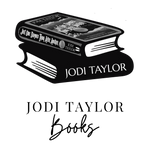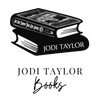Welcome to the St Mary's History blog
Reading Jodi's books has created a new love of history in many readers. The blog content is supplied by readers and offers an electic and diverse look at anything historical. If you would like to contribute please email hazel@rushford.ltd. Thank you!
Artifacts: Linking the Past and Present
Recently I visited the Ashmolean Museum in Oxford for the umpteenth time. I can, and will, spend hours trailing around the galleries just looking. Don’t get me wrong, I love to read the information cards that accompany the artifacts, but I find that just to taking time just to look and appreciate them more gratifying.

I lose myself in the unbelievably realistic folds of togas and tunics that are carved from marble. It just makes me boggle at the sheer skill of those ancient artists. How are they able to turn the solid, unmoveable stone into delicate strands of hair and fabric so real you expect them to flutter in the breeze?
And it’s not just the grand statues or busts that blow me away. The tiny, everyday carvings of rams, horses, and cows are just as incredible. Sure, they lack the finesse of the grand statues, but come on! These things were made with the most basic tools and they’re still better than anything I could knock up with modern technology.
The delicate needles for sewing, the fishing hooks, the axes, knives, and harpoons amaze me. These people, across the globe, were able to pull intricate tools and implements from unyielding materials. They made the world around them work for them. It is incredible. I will never tire of seeing these seemingly insignificant, everyday objects.

I think part of the reason artifacts have such a sway over me and history buffs everywhere is because they are a tangible connection between the past and the present. When I look at those objects, I feel a connection with the people who made them and used them. After all, I’m stood less than a foot away from objects that were carved or made or used by hands that have been cold and dead for centuries or millennium.
For some, that’s a morbid thought but for me it’s comforting, humbling and beautiful. These items, large and small, are a reminder of the sheer scale of our history. They help us remember our place in the grand scheme of things.
Yes, we have challenges in our lives, real harrowing struggles globally and locally. I’m not undervaluing the struggles of poverty, oppression, or war, but these artifacts help remind me that as a race, we endure, and we survive.

When I look at medieval jewellery, ancient pottery, renaissance paintings, I don’t just see the art and the skill, I see the building blocks of our modern world. As I look around and see people photographing artifacts with phones and cameras, I am reminded that those modern tools only exist because of these items on display.
Don’t get me wrong, I love modern technology. It’s exciting, it’s convenient, and it too shows a mastery, albeit a more exploitive mastery, of the world around us. But those ancient items remind me to be humble. Yes, we can do things our ancestors couldn’t dream of with the aid of technology. But we can only do it because of them.
As much as I love technology, museums like the Ashmolean remind me how helpless most of us would be without it. I’d probably starve to death before I was able to fashion a useable spear or fishing hook. And sure, I can knit and sew, but I wouldn’t have the materials to work with. I don’t know how to turn sheep’s wool into yarn or cotton into cloth.
I’m not saying we should go back to the good ol’ days when people lived off the land and had all these skills. What I’m saying is that we should be appreciative and awed by our ancestors who did live like that. They walked so we could run.
I finished up my trip by sitting on a bench, gazing at a decapitated statue of Clio, muse of history, or Mrs Partridge as we know her. I laughed at the irony of the muse of history now sitting as a piece of history herself.

It struck me that the Greeks had respected and understood history so much that they deified it. They understood the human impact, so they made it human. Nowadays, Clio is niche knowledge. I guessed that very few of the visitors to the museum knew Clio but that was ok. Just by coming and observing the artifacts and art on display, they were worshiping her. They were bearing witness to the expanse of history around them, and that was enough.
Jenni Morris
I'm Jen and I'm from South Wales. Much like Max, I used history and books as an escape as a child though I was more of a dinosaur kid than an Agincourt fan!
One of my most treasured items is my collection of Horrible History magazines and cards. My grandparents would buy them for me every Friday and I would spend the weekend pouring over them. They came with me to university where they were a delightful break from the dense history texts I was studying.
Post-uni I fell into that stereotype of History and English graduates and became a teacher! I loved and loathed it but decided to step back from teaching and work on writing.
So that's where I am now. I still love the prehistoric world so imagine my pure delight when I picked up One Damned Thing After Another! From that point I was hooked and it only got better.
My first love is Ancient Greece. I adore the mythology, the beautiful skill of the artists and architects, and that aura of discovery and invention that infused the ancient world. Alongside classical history I have a keen interest in Welsh history, particularly the period between 1066 and 1400. That's about as modern as I get!
While I love reading history books, I adore historical fiction. For us mere mortals it feels like the closest we will ever get to going on a jump. My favourites, apart from St Mary's, include The Historian by Elizabeth Kostova, Children of Jocasta by Natalie Haynes and anything written by Louis De Bernieres!














Leave a comment